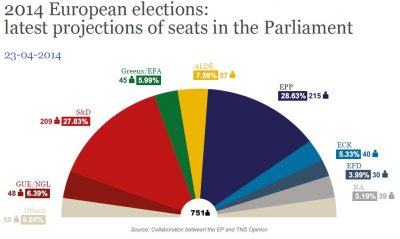| How are Members of the European Parliament seats in the European Parliament distributed? | Seats are distributed to reflect roughly the size of each member state’s population. For the exact distribution accorded to each member state, see the table, Seat Distribution in the European Parliament. As you’ll notice, the number of seats accorded to each country has been changing over recent years. |
| What system does the European Parliament use for its elections? | Proportional Representation: a general term describing a system where the number of seats a party obtains in the Parliament corresponds roughly with the total share of the votes. (Ie. Party X has 12% of all the votes, and has roughly 12% of the seats).
 Source: EAPC Many European countries, such as Germany and Austria, use a variation of this electoral system. However, since the EU is not a country, and since each member state within the EU is allotted a certain number of seats, proportional representation in European Parliament elections is more complicated than the scenario described in the definition of proportional representation. For European Parliament elections, countries either treat their territory as one single electoral district, or divide it into several European parliament constituencies. Seats are distributed according to the different political groups’ share of the vote, within the same country. Here is an example of how this works: Italy has 73 seats. The Italian section of political group X wins 50% of the overall vote in Italy; therefore, political group X is given 50% of the Italian seats (36). Poland has 51 seats. The Polish section of political group X wins 50% of the overall vote in Poland; therefore, political group X is given 50% of the Polish seats (25). Under this electoral system, it is possible to elect several political groups to the European Parliament, with no single party possessing a clear majority. |
| Is the voting system the same in each member state? | No. Although all member states must employ a system of Proportional Representation in the EP elections, the methods of each PR system differ from state to state. |
| Who can vote? | All EU citizens aged 18 or over |
Source: European Parliament
Discussion:
Canada uses the first-past-the-post electoral system. In each of the 308 electoral districts in Canada, voters elect their Member of Parliament among candidates who represent different federal political parties. The winner in any individual district requires only a plurality (ie. the winner must gain more seats than any other candidate in that district does), not a majority of the votes in that district. The political party with the most number of MPs sitting in the House of Commons traditionally forms the governing party. Under this system, one of the parties usually forms a strong majority in the House of Commons, although they may not have won a majority of the votes.
How does this compare with proportional representation? What are the advantages of each electoral system? What are the disadvantages of each?